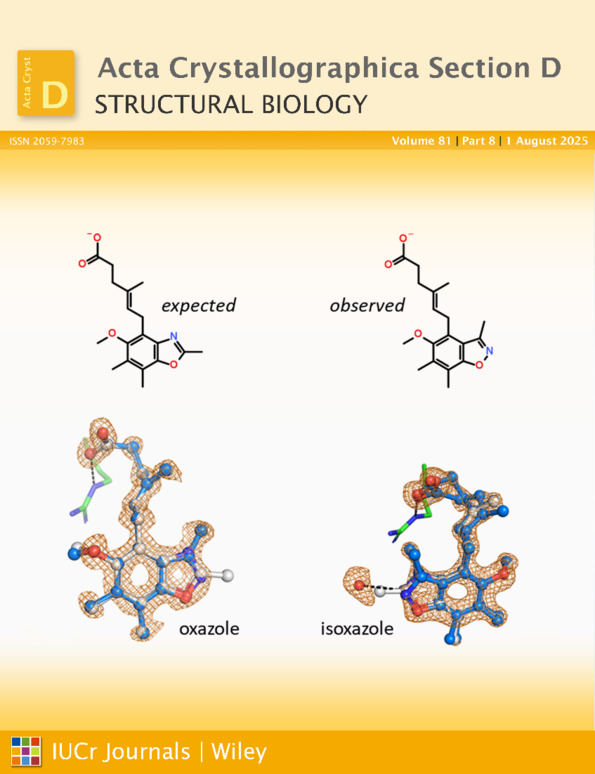Crystallization and preliminary X-ray diffraction studies of a DNA excision repair enzyme, UvrB, from Thermus thermophilus HB8
Abstract
A DNA excision repair enzyme, UvrB, from Thermus thermophilus HB8 was crystallized by the vapor-diffusion method using lithium sulfate as the precipitant and β-octylglucoside as an additive. The crystals belong to the trigonal space group P3121 or P3221, with unit-cell dimensions of a = b = 136.0 and c = 108.1 Å. The crystal is most likely to contain one UvrB protein in an asymmetric unit with the Vm value of 3.8 Å3 Da−1. The crystals diffracted X-rays beyond 2.9 Å resolution. Although the crystals were sensitive to X-ray irradiation at room temperature, the frozen crystals at 100 K showed no apparent decay during the intensity measurement.




